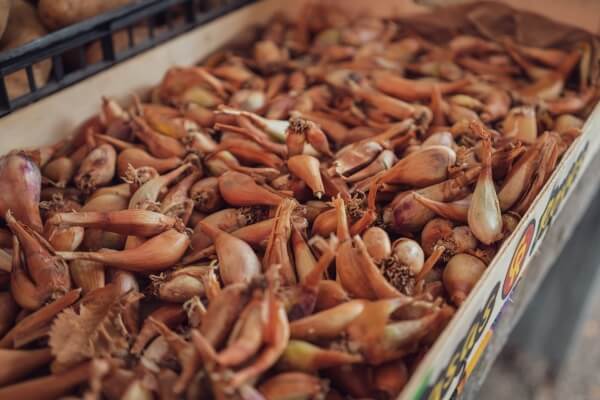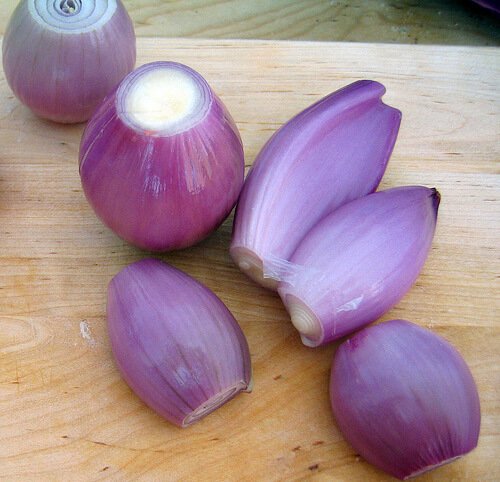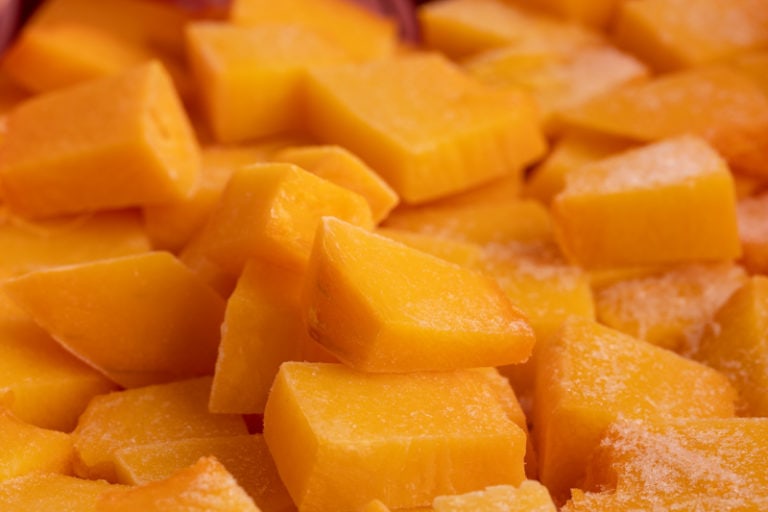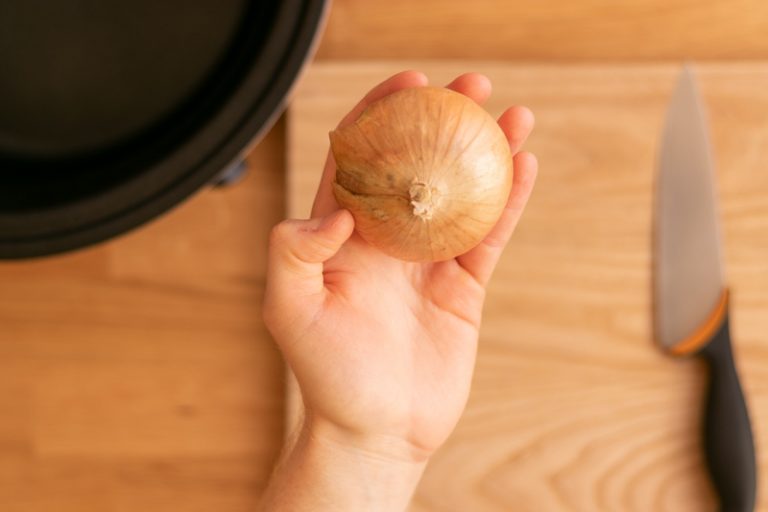How Long Do Shallots Last and How to Tell if They’re Bad?
Here’s all you need to know about the shelf life and spoilage of shallots. Learn how long shallots last, how to store them, and how to tell if one is spoiled.
Say you bought a bunch of shallots to add flavor to your dishes. Now, half of them are still in storage a couple of weeks later, and you’re thinking: how long do shallots last?
Or maybe yours don’t look all that great, and you want to know how to tell if a shallot is bad.
Sounds familiar?
If so, this article is for you. Read on.

How Long Do Shallots Last?
| Pantry | Fridge | |
|---|---|---|
| Fresh shallots | up to 1 month | 3+ months |
| Cut or diced shallots | 7 to 10 days |
Shallots last for about a month in a cool and dry place like the pantry and for more than 3 months if you refrigerate them. Once cut, they keep quality for about a week if you seal them in a bag and place in the fridge.
Storage temperature is the crucial factor here.
So if your pantry isn’t all that cold, say the temperature there is around 77°F (25°C) or higher, your shallots probably won’t last longer than two weeks. Similar thing if you store them in a kitchen cabinet or on the counter.
If you refrigerate shallots, they can last for up to 6 months, or even longer. This way, if you’re growing your own shallots, you can replant them in the spring.
If you’re thinking about prepping shallots ahead of time, cut shallots keep in the fridge for about a week. That means you can prepare them on the weekend and use them throughout the week to save time on cutting the veggies.

How to Tell if Shallots Are Bad?
Discard shallots if:
- The bulbs are soft, squishy, or oozing liquid. Those are typical signs of water loss, and if things get this far, the aromatics are no good.
- The bulbs are rotten, moldy, or have large darkened areas. Those show up if shallots are stored for too long or in poor conditions. As usual, you can cut off the affected area if it’s small, but the bulb is not good if decay is taking over.
- They smell “funny.” If your bunch smells off or weird, it’s safe to assume they’re gone.
As always, if there’s anything else you find concerning, trust your gut and toss the shallot.
But before we wrap this section, let’s quickly talk about sprouting shallots and dry leaves.
Sprouting shallots are okay to use. Just cut off the green shoots, and use the rest.
(The same is true for other sprouting veggies. For example, sprouting sweet potatoes are okay to use, and so is sprouting garlic.)
A few dry outer layers of papery skin are expected. Sometimes it’s only going to be a single layer, but other times you’ll need to remove 2 or 3 layers to get to what you’re after.
More layers of dry leaves don’t make the shallot bad by any means, and the same applies to onions with dry outer leaves.
If you’d like to learn more on the topic, check out my article on the spoilage signs of onions.

How To Store Shallots
Store shallots in a cool and dry location and allow the bulbs to breathe. Stored this way, they’ll last for up to a month in a cool pantry and for more than 3 months if refrigerated.
After peeling, shallots belong in the fridge in an airtight container.
Unlike most veggies, shallots thrive in a relatively low humidity of 60% to 70%, so it’s important to give them ample ventilation. That’s also why they’re often sold in mesh bags, which provide a lot of airflow.
The fridge is the best choice when it comes to where shallots should sit, as the ideal storage temperature is between 32 and 40°F (or 0 to 4.5°C).
But if you decide to refrigerate these tiny onions, skip the produce drawer, which is almost always humid, and opt for a fridge shelf instead. And don’t crowd the shallots, so they can breathe and stay dry.
That said, many people store shallots in the pantry or a cabinet in the kitchen (yours truly included). That storage location works well unless you live in a warm climate, or it’s the middle of a hot summer and you don’t have AC. If that’s the case, go with the fridge.
Of course, keeping shallots in the pantry or kitchen shortens their shelf life, but it’s still relatively long, as least compared to most other veggies.
Do Shallots Need to Be Refrigerated?
Shallots don’t need to be refrigerated, but by doing so, you increase their shelf life from about a month in the pantry to more than three months in the fridge. So, leaving them at room temperature is usually okay unless you have a ton of shallots or need to save them for more than a few weeks.
Shallots Shelf Life and Spoilage Summary
Thank you for reading this short guide on shallots. Let’s briefly recap what we’ve covered above:
- How long do shallots last? Shallots keep for about a week on the counter, up to a month in the pantry, and more than 3 months if refrigerated. After cutting, they last for about a week, sealed in a plastic bag and in the fridge.
- How to tell if shallots are bad? Shallots are spoiled if they’re soft, squishy, seeping, or have large areas covered with rot, mold, or darkened. You should also toss shallots that smell off or “funny.”
- How to store shallots? Store shallots in a cool and dry place with plenty of ventilation. Mesh bags are great for that. If you use them within a couple of weeks, they can sit in the pantry, but if you need more time, refrigeration extends their shelf life to more than three months.
Rotten Records: Share Your Snap!
Caught some food past its prime? Upload your photo to “Rotten Records” and help others spot the signs of spoilage. Every image makes our food community safer and more informed!
![How Long Do Bell Peppers Last? [Whole, Cut, Cooked]](https://www.doesitgobad.com/wp-content/uploads/Bell-peppers-side-by-side-768x512.jpg)


![How Long Do Carrots Last? [Whole, Cut, Cooked & Baby]](https://www.doesitgobad.com/wp-content/uploads/Carrots-in-hand-768x512.jpg)
![How to Store Eggplant? [Whole, Cut, and Cooked]](https://www.doesitgobad.com/wp-content/uploads/Three-eggplants-768x512.jpg)
![How to Tell if Garlic Is Bad? [3 Signs of Spoilage]](https://www.doesitgobad.com/wp-content/uploads/Spoiling-garlic-bulb.jpg)